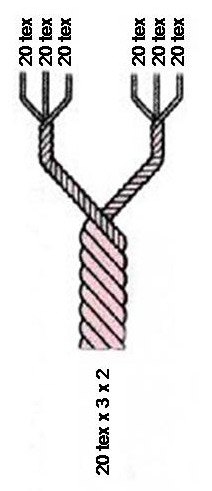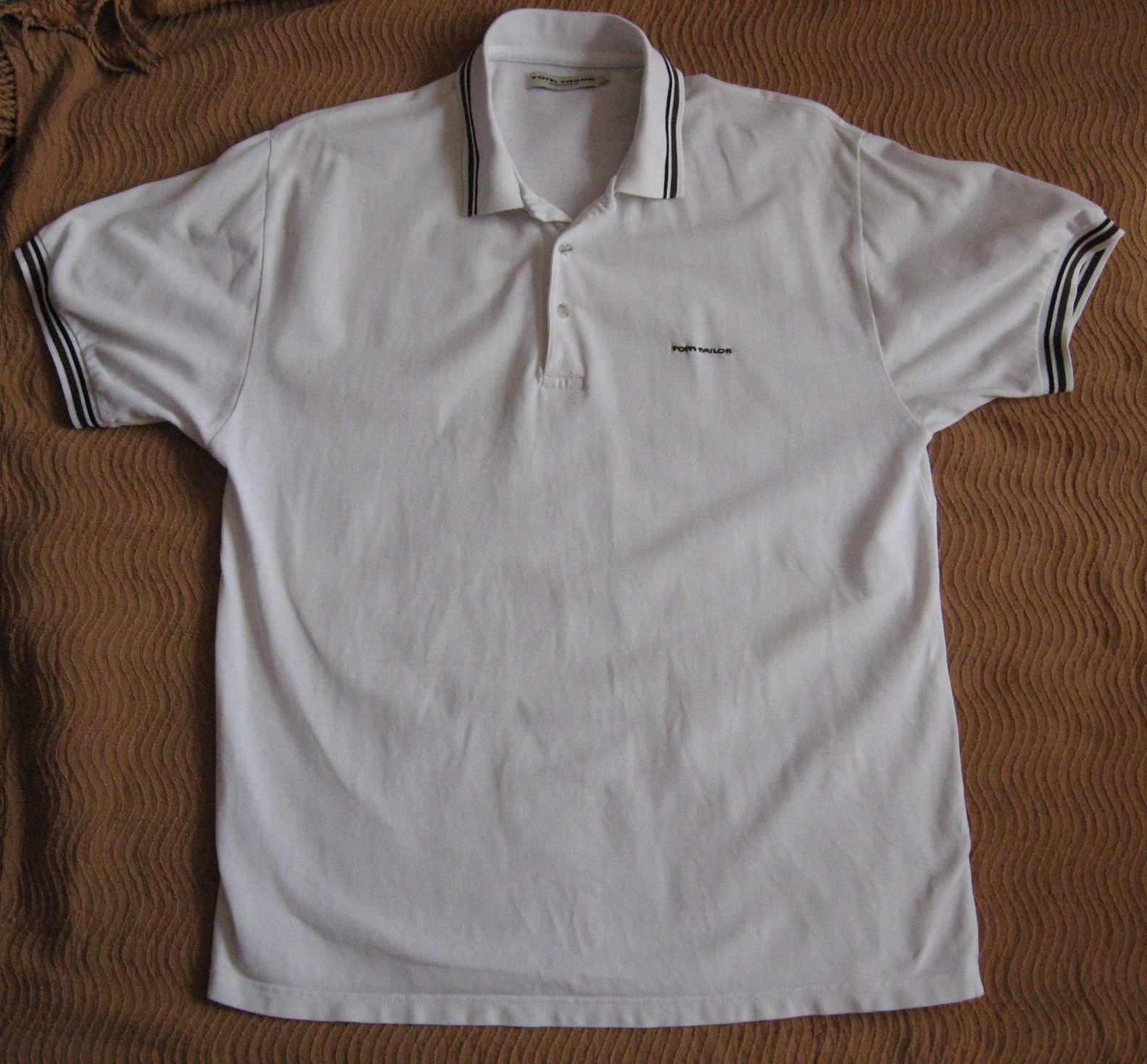|
Pick Glass
A pick glass also known as a piece glass is a magnifying glass helpful in counting thread count. It is used to determine the number of yarns in warp and weft in woven fabrics and courses and wales in knitted fabrics. Compact constructions of fabrics may have a higher thread count. That is also called "cloth count." Function Pick glass aid in measuring the following. Ends and picks Ends per inch is the number of warp threads per inch of woven fabric. Picks per inch is the number of weft threads per inch of woven fabric. Pick is a term that refers to a single weft thread. By and large, the more ends and picks per inch, the finer the cloth. Balanced plain weave fabrics have warp and weft threads that are the same weight (size) and have the same number of ends and picks per inch. Courses and Wales Loops are the building blocks of knitted fabrics, and courses and wales in knitted fabrics are importantly similar to ends and pick in woven fabrics. The knitting structure is f ... [...More Info...] [...Related Items...] OR: [Wikipedia] [Google] [Baidu] |
Pick Glass
A pick glass also known as a piece glass is a magnifying glass helpful in counting thread count. It is used to determine the number of yarns in warp and weft in woven fabrics and courses and wales in knitted fabrics. Compact constructions of fabrics may have a higher thread count. That is also called "cloth count." Function Pick glass aid in measuring the following. Ends and picks Ends per inch is the number of warp threads per inch of woven fabric. Picks per inch is the number of weft threads per inch of woven fabric. Pick is a term that refers to a single weft thread. By and large, the more ends and picks per inch, the finer the cloth. Balanced plain weave fabrics have warp and weft threads that are the same weight (size) and have the same number of ends and picks per inch. Courses and Wales Loops are the building blocks of knitted fabrics, and courses and wales in knitted fabrics are importantly similar to ends and pick in woven fabrics. The knitting structure is f ... [...More Info...] [...Related Items...] OR: [Wikipedia] [Google] [Baidu] |
Units Of Textile Measurement
Textile fibers, threads, yarns and fabrics are measured in a multiplicity of units. * A fiber, a single filament of natural material, such as cotton, linen or wool, or artificial material such as nylon, polyester, metal or mineral fiber, or man-made cellulosic fibre like viscose, Modal, Lyocell or other rayon fiber is measured in terms of linear mass density, the weight of a given length of fiber. Various units are used to refer to the measurement of a fiber, such as: the denier and tex (linear mass density of fibers), super S (fineness of wool fiber), worsted count, woolen count, linen count (wet spun) (or Number English (Ne)), cotton count (or Number English (Ne)), Number metric (Nm) and yield (the reciprocal of denier and tex). * A yarn, a spun agglomeration of fibers used for knitting, weaving or sewing, is measured in terms of cotton count and yarn density. * Thread, usually consisting of multiple yarns plied together producing a long, thin strand used in sewing or weavi ... [...More Info...] [...Related Items...] OR: [Wikipedia] [Google] [Baidu] |
Warp And Weft
Warp and weft are the two basic components used in weaving to turn thread or yarn into fabric. The lengthwise or longitudinal warp yarns are held stationary in tension on a frame or loom while the transverse weft (sometimes woof) is drawn through and inserted over and under the warp. A single thread of the weft crossing the warp is called a ''pick''. Terms vary (for instance, in North America, the weft is sometimes referred to as the ''fill'' or the ''filling yarn'').Barber (1991), p. 79 Each individual warp thread in a fabric is called a ''warp end'' or ''end''.Burnham (1980), pp. 170, 179 Inventions during the 18th century spurred the Industrial Revolution, with the "picking stick" and the "flying shuttle" ( John Kay, 1733) speeding up the production of cloth. The power loom patented by Edmund Cartwright in 1785 allowed sixty picks per minute. Etymology The word ''weft'' derives from the Old English word ''wefan'', to weave. ''Warp'' means "that which is thrown away" (O ... [...More Info...] [...Related Items...] OR: [Wikipedia] [Google] [Baidu] |
Woven Fabric
Woven fabric is any textile formed by weaving. Woven fabrics are often created on a loom, and made of many threads woven on a warp and a weft. Technically, a woven fabric is any fabric made by interlacing two or more threads at right angles to one another. Woven fabrics can be made of both natural and synthetic fibres, and are often made from a mixture of both. E.g. 100% Cotton or 80% Cotton & 20% polyester. 60% spandex and 40% cotton could also be woven together. Woven fabric is typically used in clothing, garments, for decoration, furniture or covering purposes such as carpets. In the Midwest, it is popular to have woven wicker furniture in sitting areas such as a patio or a dining room. Qualities Woven fabrics only stretch diagonally on the bias directions (between the warp and weft directions), unless the threads used are elastic. Woven fabric cloth usually frays at the edges, unless techniques are used to counter it, such as the use of pinking shears or hemming. Different com ... [...More Info...] [...Related Items...] OR: [Wikipedia] [Google] [Baidu] |
Knitted Fabric
Knitted fabric is a textile that results from knitting, the process of inter-looping of yarns or inter-meshing of loops. Its properties are distinct from woven fabric in that it is more flexible and can be more readily constructed into smaller pieces, making it ideal for socks and hats. Weft-knit and warp-knit fabric There are two basic varieties of knit fabric: weft-knit and warp-knit fabric. Warp-knitted fabrics such as tricot and milanese are resistant to runs, and are commonly used in lingerie. Weft-knit fabrics are easier to make and more common. When cut, they will unravel (run) unless repaired. Warp-knit fabrics are resistant to runs and relatively easy to sew. Raschel lace—the most common type of machine made lace—is a warp knit fabric but using many more guide-bars (12+) than the usual machines which mostly have three or four bars. (14+) Structure of knitted fabrics Courses and wales In weaving, threads are always straight, running parallel either length ... [...More Info...] [...Related Items...] OR: [Wikipedia] [Google] [Baidu] |
Warp (weaving)
Warp and weft are the two basic components used in weaving to turn thread or yarn into fabric. The lengthwise or longitudinal warp yarns are held stationary in tension on a frame or loom while the transverse weft (sometimes woof) is drawn through and inserted over and under the warp. A single thread of the weft crossing the warp is called a ''pick''. Terms vary (for instance, in North America, the weft is sometimes referred to as the ''fill'' or the ''filling yarn'').Barber (1991), p. 79 Each individual warp thread in a fabric is called a ''warp end'' or ''end''.Burnham (1980), pp. 170, 179 Inventions during the 18th century spurred the Industrial Revolution, with the "picking stick" and the " flying shuttle" ( John Kay, 1733) speeding up the production of cloth. The power loom patented by Edmund Cartwright in 1785 allowed sixty picks per minute. Etymology The word ''weft'' derives from the Old English word ''wefan'', to weave. ''Warp'' means "that which is thrown away" ... [...More Info...] [...Related Items...] OR: [Wikipedia] [Google] [Baidu] |
Weft
Warp and weft are the two basic components used in weaving to turn thread or yarn into fabric. The lengthwise or longitudinal warp yarns are held stationary in tension on a frame or loom while the transverse weft (sometimes woof) is drawn through and inserted over and under the warp. A single thread of the weft crossing the warp is called a ''pick''. Terms vary (for instance, in North America, the weft is sometimes referred to as the ''fill'' or the ''filling yarn'').Barber (1991), p. 79 Each individual warp thread in a fabric is called a ''warp end'' or ''end''.Burnham (1980), pp. 170, 179 Inventions during the 18th century spurred the Industrial Revolution, with the "picking stick" and the " flying shuttle" ( John Kay, 1733) speeding up the production of cloth. The power loom patented by Edmund Cartwright in 1785 allowed sixty picks per minute. Etymology The word ''weft'' derives from the Old English word ''wefan'', to weave. ''Warp'' means "that which is thrown away" ... [...More Info...] [...Related Items...] OR: [Wikipedia] [Google] [Baidu] |
Balanced Plain Weave
A balanced fabric is one in which the ''warp'' and the ''weft'' are of the same size. In weaving, these are generally called "balanced plain weaves" or just "balanced weaves", while in embroidery the term "even-weave" is more common. Balanced plain weave A balanced plain weave is a fabric in which the warp threads and the weft threads are equally spaced, and are identical or similar in size. In addition to the same sett, the yarn is the same in the warp and weft. The term can be used for a tabby weave or a basketweave. Balanced weaves have also been called "50/50 plain webs", and are a subset of plain weaves. Unbalanced weaves, in which warp and weft differ in size, may be either ''warp-dominant'' or ''weft-dominant'' fabrics. The primary advantage of balanced weaves is that they are potentially stronger than other basic weaves. Even-weave An even-weave fabric or canvas, a term mostly used in embroidery, is any textile where the warp and weft threads are of the same size. Eve ... [...More Info...] [...Related Items...] OR: [Wikipedia] [Google] [Baidu] |
Fabric Inspection
Fabric inspection, also known as fabric checking, is a systematic fabric evaluation in which defects are identified. Fabric inspection helps understand quality in terms of color, density, weight, printing, measurement, and other quality criteria prior to garment production. Fabric inspection takes place at various stages of manufacturing, including intermediate and final. "Perching" was another term for fabric inspection. Procedure Quality control in textiles is to inspect whether a manufactured material meets the specifications set by the buyers. It is a broader aspect that includes the quality of the final product and the encompassing materials, for example, yarn and fabric. Fabric quality addresses fabric-related issues. Fabric inspection is a step of visual examination apart from the performance criteria; It finds various flaws and irregularities. Accordingly, it grades the fabrics as per quality level, fabric weight, shading color, number, and size of the defects. In additio ... [...More Info...] [...Related Items...] OR: [Wikipedia] [Google] [Baidu] |





